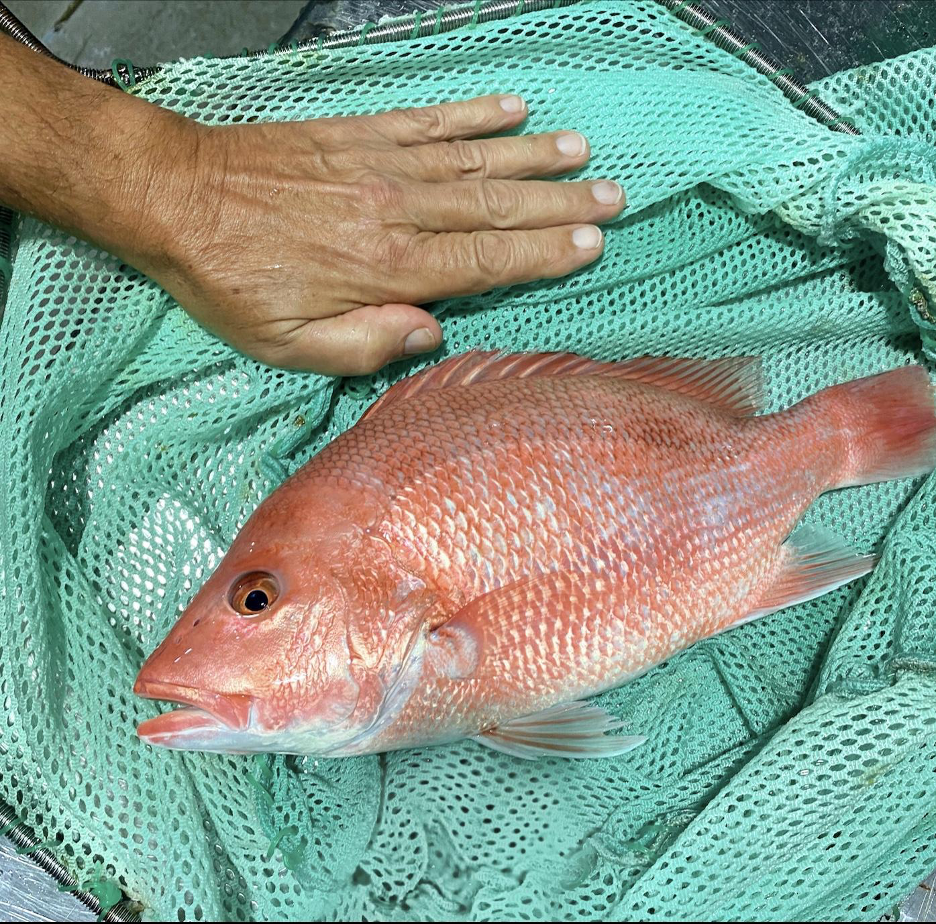We’re excited to update that our saltwater, farm-raised red snapper have been growing at a phenomenal rate. Survival has virtually been sitting at 100% since the fingerling stage, and they’ve now attained a beautiful red color, proving them to be the perfect species for culture in the Bahamas.

This successful endeavor is in part result from a long-standing collaboration between Tropic Seafood and the University of Miami Aquaculture Program. This collaborative encompasses high-value marine species such as the Nassau grouper, olive flounder and the red snapper. The red snapper broodstock have been maintained and conditioned to spawn year-round at the UM Experimental Hatchery, providing eggs and fingerlings used to stock Tropic’s facilities for nursery, growout trials and market testing. University of Florida’s Whitney Lab has participated as well, using eggs from UMEH for raising of juveniles used in the farming cycle at Tropic. Our goal is to continue, and expand on this mutually beneficial effort, to develop commercial aquaculture of red snapper in the Bahamas.
Like any potential aquaculture candidate, much of the success is dependent upon a good and consistent supply of fingerlings. Undoubtedly, if this species is to be commercially raised, a hatchery would be an integral and important part of the plan as there are a very limited number of fingerling suppliers for this species. Test marketing on the island of New Providence (Nassau), Bahamas has proven this species to be extremely marketable and very high in demand. The overall appearance, pleasant texture, and buttery taste of this fish has been very well received by customers. Additional reactions from customers were very positive, including one from a local vendor at the public market stating, “Now this is what snapper should taste like.” He was unaware of the fact that this fish was farm-raised.
A majority of the fish are 1.5 lb. (600-700 g) with some reaching a weight of 2 lb. at one year of age. At that size, the ratio of meat to bone is quite high, making for a relatively thick fillet and great plate coverage.
Currently, sales are limited in volume due to the fact that there is only a small supply of fish available, but the demand and acceptance of this farm-raised fish species could lead to a successful marketing campaign if available in commercial quantities. Due to the small size of the market in the Bahamas, the ultimate goal would be to sell the majority of the fish as a fresh product to overseas destinations such as United States, Canada, Latin America, and Europe. The product would be sold as a head-on, gutted and scaled, whole fish.
The speed at which this popular fish grows combined with the excellent food conversion ratios attained in culture, yield a product that is both economical to grow and has a very strong market demand. Essentially it is the perfect species for aquaculture commercialization in the Bahamas.
Although all cohort groups of fish at Tropic Seafood are weighed and measured monthly, for data collection purposes, the 50 largest and fastest growing fish, have now been relocated to a separate tank for use as future broodstock. These fish have far exceeded a weight of two pounds within their first year. Most likely, it will take two more years for them to become sexually mature before they start producing eggs.

